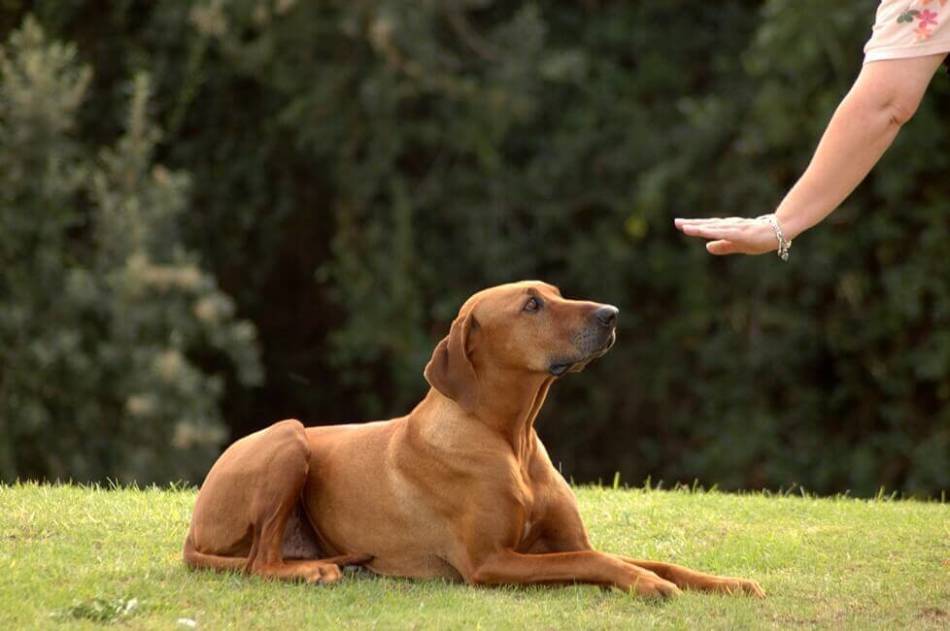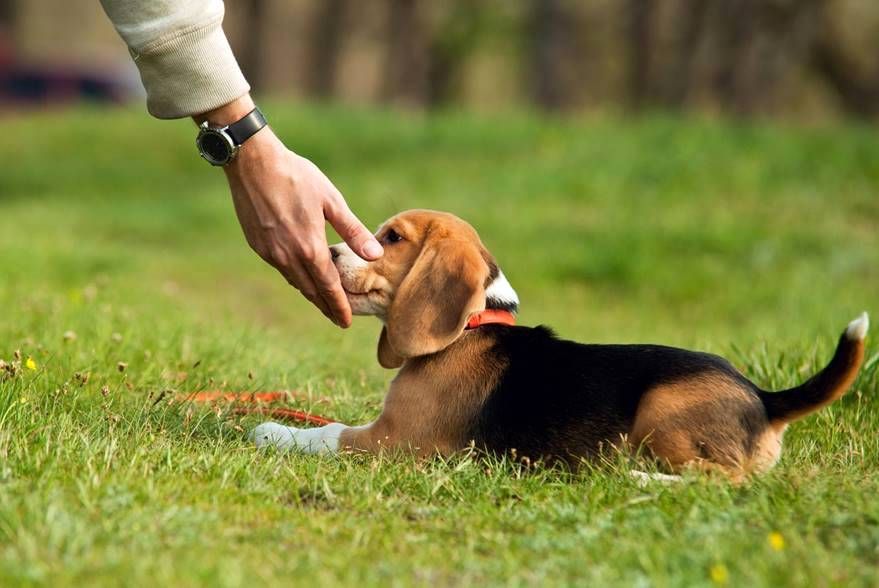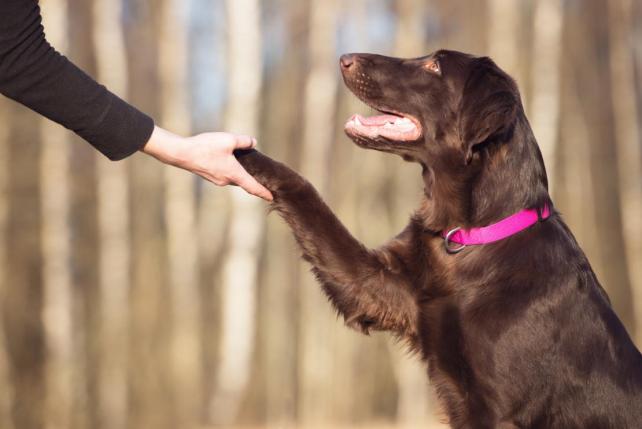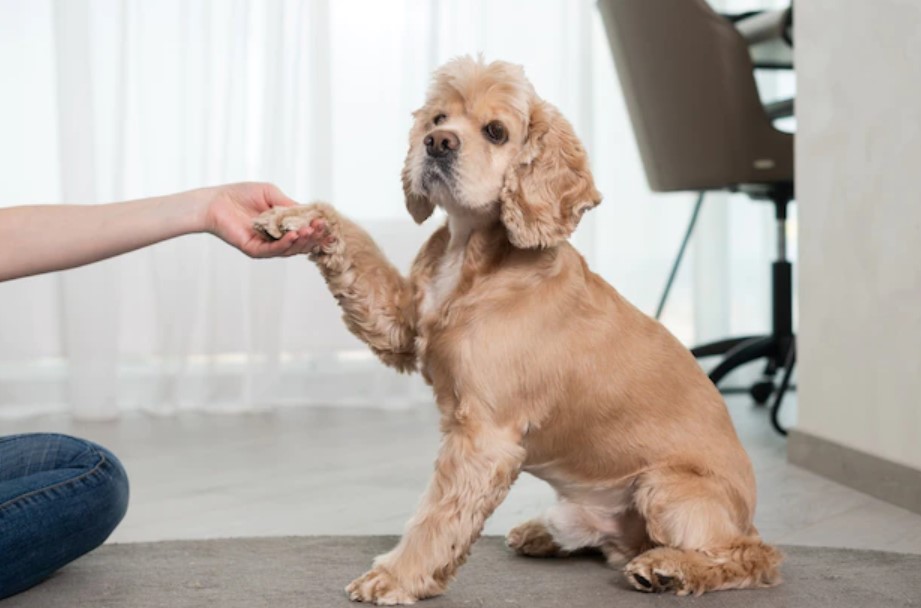A friendly stop signal from the dog helps to stop unwanted behavior. The stop signal in the dog can prevent dangerous situations, such as eating unfamiliar food. Therefore, a termination signal should be trained in every dog training. In this article, you will find out how you can train the dog to stop.
What is a dog stop signal?

No, no, no, the shouts are getting louder and louder. But the dog does not react to the alleged termination signal. He sees more benefits in continuing his behavior. The dog owner, who is still a few meters away, becomes more and more nervous and hectic. Often there is also a punitive stimulus. It can’t work like that. A correct termination signal always has a positive connotation and is linked to the offer of alternative behavior.
The dog hears the signal word and stops behaving as something better awaits.
What happens when there is a cancel signal?
The dog is performing an undesirable behavior. In a normal and calm voice, the dog owner says the word that has been set as the stop signal. The dog interrupts its behavior and runs to its owner because a reward awaits it
What must be considered in the case of a stop signal?
In order for the words used as termination signals in dogs to work, they must have positive connotations. Body language and voice must match when giving the command. The dog is told by the stop signal that he should stop his behavior.
But in order for the abort signal to work in the dog, it has to be trained beforehand.
What is a dog stop signal?

A stop signal in the dog stops unwanted behavior. The dog performs an alternative behavior and receives a reward.
How do you train a dog to stop signaling?
Dogs have to learn a stop signal first. The dog’s abort signal is positively linked to a reward during the exercises. The reward can be a treat or your favorite toy. Patting is also a way to reward the dog.
Words should always be combined with hand signals so that the signal to stop also works at greater distances or with deaf dogs
Procedure
The first training of a termination signal should take place in a quiet, distraction-free environment so that the dog can concentrate well. In the first step, the chosen word is positively linked to a reward. The reward must be given within two to three seconds so that the dog can make a connection between the stop signal and the reward.
What must be considered when training the dog to stop the signal?
Training should be slow and stress-free. In order for the dog to understand the command, it must be unique and clear. The dog owner’s body language must match the dog’s signal to stop. At each stop signal, the dog must be offered an alternative behavior or advantage. An example of this is a tug of war or a tasty chew.
The dog needs a unique abort signal

In order for words to be used as a break signal, they must be well defined and unique. If the word is used in other situations, the dog will not find its way. He is confused and cannot properly respond to the abort signal.
How loud does a dog have to be to give a stop signal?
Dogs hear better than humans. Frequencies between 15 and 50,000 Hertz and three-dimensional hearing are no problem for the four-legged friends. A stop signal or other commands, therefore, do not have to be spoken out loud. It is more important to speak in a deep and firm voice so that the dog can clearly distinguish the stop signal from praise.
What should you look out for in the reward?
The reward must be given within a few seconds so that the dog can form a connection in its brain. If the dog is at a greater distance, the reward can also be given with a clicker. If the stop signal is used to discourage the dog from eating unfamiliar food, a similar food should not be used for the reward. The dog is unable to understand why a piece of sausage is once forbidden and then allowed a short time later. Treats as a reward for dog training the abort signal must therefore always be carefully selected.
How do I train an abort signal?
A break signal is always trained in several steps.
The first training step for the stop signal in the dog

The dog is offered food in hand. At the same time, he is asked to take the food. This exercise is repeated several times with both hands. The hands should always be in a different position. Now the food is held out in the hand to the dog again. At the same time, the termination signal, for example, “Stop”, is said. The hand closes around the lining. If the dog sniffs your hand, you should ignore it. If the dog waits, he gets a reward.
If the dog performs this exercise correctly, the level of difficulty increases. Before the dog can eat the treat, it must look at its owner. He can only eat the reward after being asked to do so. Care must be taken to ensure that the treatment is not given to the dog with the previously forbidden hand. Before taking the next step in dog training, it is important to verify that the signal is firmly anchored in the brain.
For the check, the open hand with the treat is held out to the dog. The stop signal prevents him from eating. If the dog waits and looks into the eyes of its owner, it will receive its reward. If the four-legged friend simply wants to eat the food, the hand must be closed quickly. More training sessions are required before step two can begin.
The second step
The lining is laid on the ground. The dog is given permission to eat it. Next time, the cancel signal sounds again. The four-legged friend has to wait. If he keeps his distance from the food, he is rewarded with a treat from his hand. If the dog tries to eat, the food on the ground is quickly hidden with the foot.
The third step
The training takes place in a quiet outdoor area. Pieces of food are placed on the ground. The leashed dog is led to the food. As soon as the four-legged friend is interested in the food, the stop signal comes. If the dog turns away from the food, it will be rewarded. If he is still interested in the food, the attention is drawn to the holder by tightening the line. Are the exercises mastered without any problems? Then you can also train with the dog’s favorite food to increase the level of difficulty.
Can old dogs also learn a stop signal?
Learning is possible at any age. The training takes longer.
Exercises to train the abort signal
We have two sample exercises for you to help your dog learn the signal:
A trail of liver sausage is deposited on the meadow. The dog smells the treat and runs towards it. As soon as he has reached the liver sausage and sniffs it, the stop signal sounds again. Ideally, the four-legged friend stops sniffing and runs to his owner. Immediately he gets a reward. The dog can also be rewarded with a click immediately after turning away. The treat will follow later.
Cheese is placed on a tree stump. The dog runs to eat the treat. He hears the signal and runs to the owner. A reward awaits him here.
If the dog is still unsure during the training, the stop signal can also be practiced with the dog on a leash. A short, later a long, running line is used at the beginning.
So that deaf dogs can also understand a stop signal, it is combined with a hand signal. The hand signal is given at the same time as the stop signal is given. The four-legged friend links the word with the hand signal.
How long does it take for the dog to understand a stop signal?

Every dog learns at a different rate. The owner’s patience is required here. The next training step may only be started when the dog has mastered and executed an exercise. In order for something learned to be able to establish itself in the brain through connections, 1000 to 10000 repetitions must be carried out. Some four-legged friends learn the dog’s stop signal within a few days, while others need three to four weeks. The pace of learning is set by the dog.



























